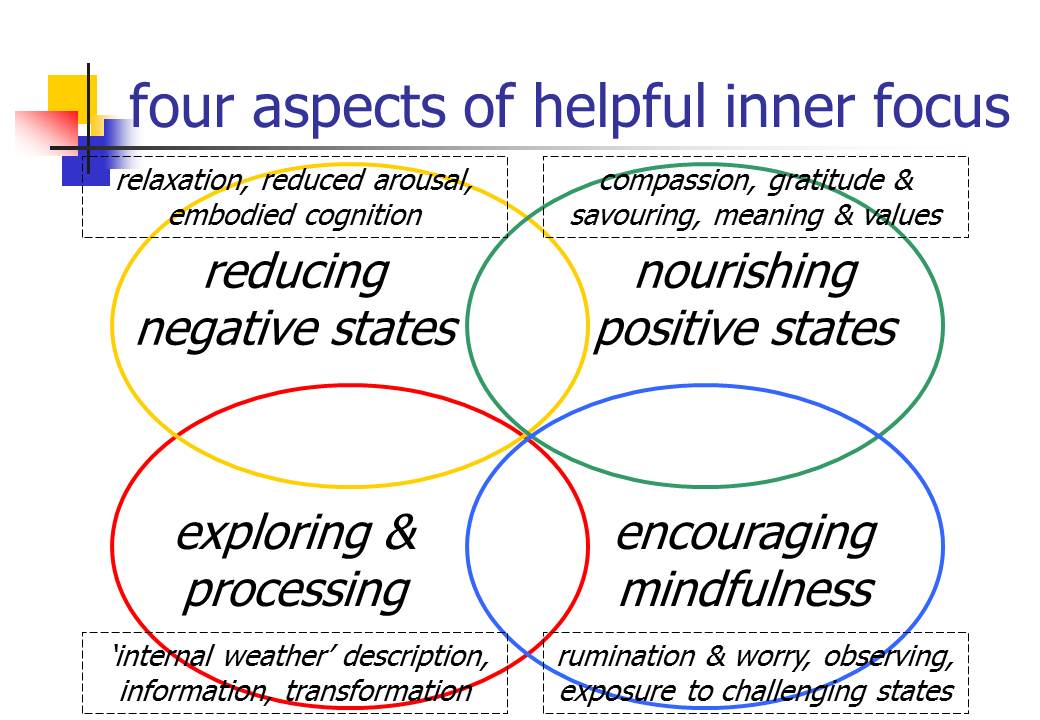Personal directions in mindfulness teaching: an overview
Last updated on 8th August 2012
I have been meditating regularly for over forty years and teaching for over thirty. I think the recent surge of interest and research on mindfulness is hugely exciting. I remember in 1998 hearing John Teasdale give a ground-breaking lecture on "Mindfulness training in treatment and prevention" at the British Association for Behavioral & Cognitive Psychotherapies (BABCP) annual conference in Durham. I chatted to him in a meal queue afterwards and then the following year spent a week on Bardsey Island off the coast of Wales with John, Mark Williams, Zindel Segal and a bunch of other academics and mindfulness practitioners. Heady times, very much at the start of a new way of treating recurrent depression. Their book "Mindfulness-based cognitive therapy for depression: a new approach to preventing relapse" was published in 2002. Fascinating to see that the second edition is due out this November - at 448 pages long, it's expanded a good deal from the 351 page first edition.
I first learned mindfulness meditation with a Thai teacher at the Cambridge University Buddhist Society in the early 1970's. It was interesting in '99 on Bardsey Island to be exposed to input from one of the senior teachers from Jon Kabat-Zinn's "UMASS Center for Mindfulness", which itself had just been founded four years earlier ... although their eight week "Mindfulness-based stress reduction" program had been taught since '79. Over last winter I revisited this territory extensively - reading most of the important recent research articles on mindfulness, writing thirty or so relevant blog posts, putting myself through a current iteration of the "Mindfulness-based stress reduction" course, and carefully going over Mark Williams & Danny Penman's 2011 book "Mindfulness: a practical guided to finding peace in a frantic world". At present I am spending a couple of weekends run by two senior Scottish trainers on "Mindfulness teacher development".
It has been a really interesting process and I'm currently left feeling excited, stimulated, happy, frustrated, challenged, and hopeful. Excited & stimulated because we're learning so much about mindfulness at the moment. I would never have dreamt in the early to mid-90's that such a lot of money & expertise would soon be channelled into research on these areas. It's brilliant. I love the cross-fertilisation between traditional meditation traditions and carefully followed through new research. I love the fact that new insights are emerging month by month. It's a rich time to be interested in mindfulness. And I'm very happy that these developing practices to help ease suffering & promote flourishing are becoming so much more available.
I'm frustrated and challenged too. Frustrated because it's so easy for techniques to become hide-bound. We do it this way because we do it this way because we do it this way. I've been exposed to lots of different mindfulness teaching approaches over these last months - through reading, recordings and face-to-face. It's very patchy stuff with what sometimes feels to me like difficult internal contradictions in the methods being used, unsubstantiated teaching variations, over-respect for tradition, under-awareness of new research, and lack of appreciation of wider therapeutic context. And none of this is surprising. How immensely hard it is to balance trying to make high quality mindfulness approaches widely available while at the same time trying to keep teaching evidence-based and excellent. This "creaking" is par for the course with pretty much any new therapy initiative.
So where do I stand at the moment with all of this and how do I want to integrate new insights about mindfulness into my personal practice and my work as a health professional? Well, the diagram below illustrates some areas I think are worth paying attention to:

(This diagram is downloadable both as a PDF file and as a Powerpoint slide).
I intend to write a series of blog posts over the summer discussing these areas, looking at the evidence underpinning why it might make sense to approach practice & teaching in these adapted ways, and exploring what this might involve in terms of actual meditation methods. For the first of these, see "Personal directions in mindfulness teaching: should we really only be training mindfulness for diverse group populations?"
